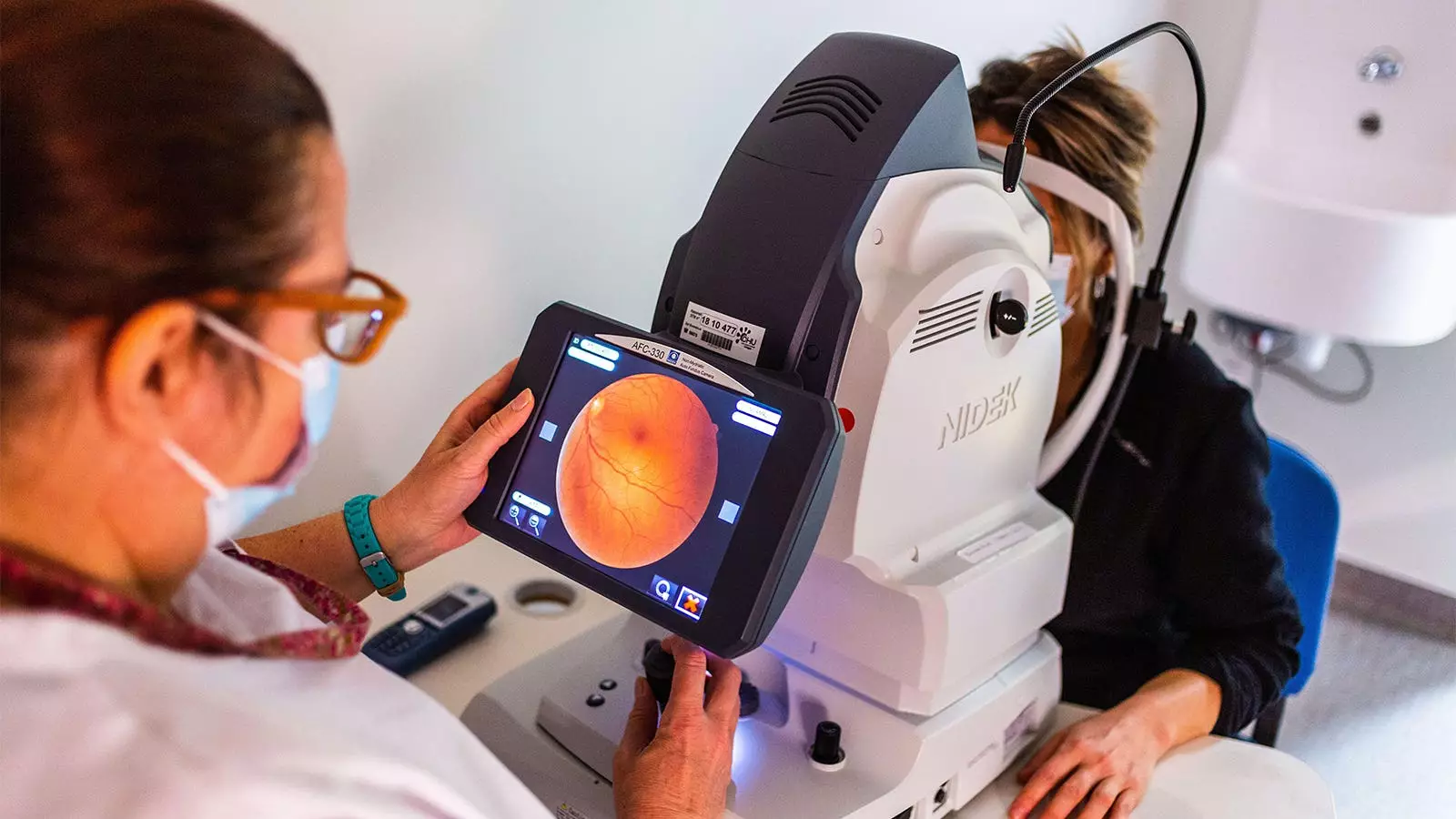A 38-year-old woman with neurofibromatosis type 1 (NF1) presented for a routine ophthalmic examination, only to leave the Danish clinicians puzzled by the presence of choroidal Yasunari nodules in both eyes. This patient had no previous history of systemic vasculopathy, but did have a long-standing issue with peripheral retinal capillary nonperfusion in her left eye. Years ago, she had received treatment with panretinal photocoagulation to manage this condition. Typically, choroidal Yasunari nodules are difficult to detect through ophthalmoscopic examination, however, they are easily visualized using near-infrared photography. Despite the presence of these nodules, the patient’s corrected visual acuity was 20/20 in both eyes and no other pathologies were found.
The clinicians noted thinning of the central retinal artery and branching arcades when comparing their findings to an assessment conducted three years earlier. Additionally, a chorioretinal anastomosis had formed in the superotemporal macula, which was believed to be a result of the previous photocoagulation scar. Through fluorescein angiography, the researchers confirmed the retrograde arterial supply through this anastomosis. Interestingly, they observed that the temporal macular vasculature was filled in a rapid, initial manner through retrograde circulation, followed by anterograde filling of the central retinal artery branches to perfuse the nasal retina.
The authors hypothesized that the development of the anastomosis may be attributed to a combination of hydrostatic pressure gradients over the retinal pigment epithelium and vascular endothelial growth factor production associated with retinal capillary nonperfusion. Neurofibromatosis type 1 has been shown to cause retinal vascular abnormalities in a relatively high percentage of patients, affecting anywhere from 17% to 37% of individuals. While severe retinal vascular abnormalities are uncommon, there have been documented cases of peripheral or central retinal vascular occlusion and neovascular glaucoma in patients with NF1. These cases often occur in younger patients with impaired arterial inflow and worsening nonperfusion of the retinal capillary.
The treatment of nonischemic central retinal vein occlusion (CRVO) involves creating auxiliary flow between the occluded high-pressure retinal venous circulation and the unobstructed low-pressure choroidal venous circulation. This is done through a laser-induced chorioretinal anastomosis (LICRA), which aims to normalize venous pressure in the retina. In a study of patients with nonischemic CRVO who underwent LICRA procedures, it was found that these individuals had superior visual acuity and required fewer injections of anti-vascular endothelial growth factor compared to control participants after 2 years. However, the success rate of creating an anastomosis was only two out of three attempts, with procedure-related complications occurring for every third patient.
Most attempts to create LICRA in eyes with ischemic CRVO have been unsuccessful, potentially due to the significant damage sustained by endothelial cells as a result of ischemia and venous thrombosis affecting retinal circulation. In the case of the patient reported here, the incidental LICRA related to previous treatment may have contributed to preserving retinal function and maintaining good visual acuity. This particular LICRA differed from those in eyes with CRVO, as it caused inflow of oxygenated blood to the retina rather than outflow from congested retinal veins to the choroid.
The presence of choroidal Yasunari nodules in a patient with neurofibromatosis type 1 raised several questions for Danish clinicians. Through careful examination and imaging techniques, they were able to identify a chorioretinal anastomosis and propose a mechanism for its development. This case serves as a reminder of the diverse manifestations of NF1 and the potential for unconventional treatment outcomes. Further research is needed to better understand the underlying mechanisms and establish appropriate management strategies for patients with NF1 and associated retinal vascular abnormalities.


Leave a Reply